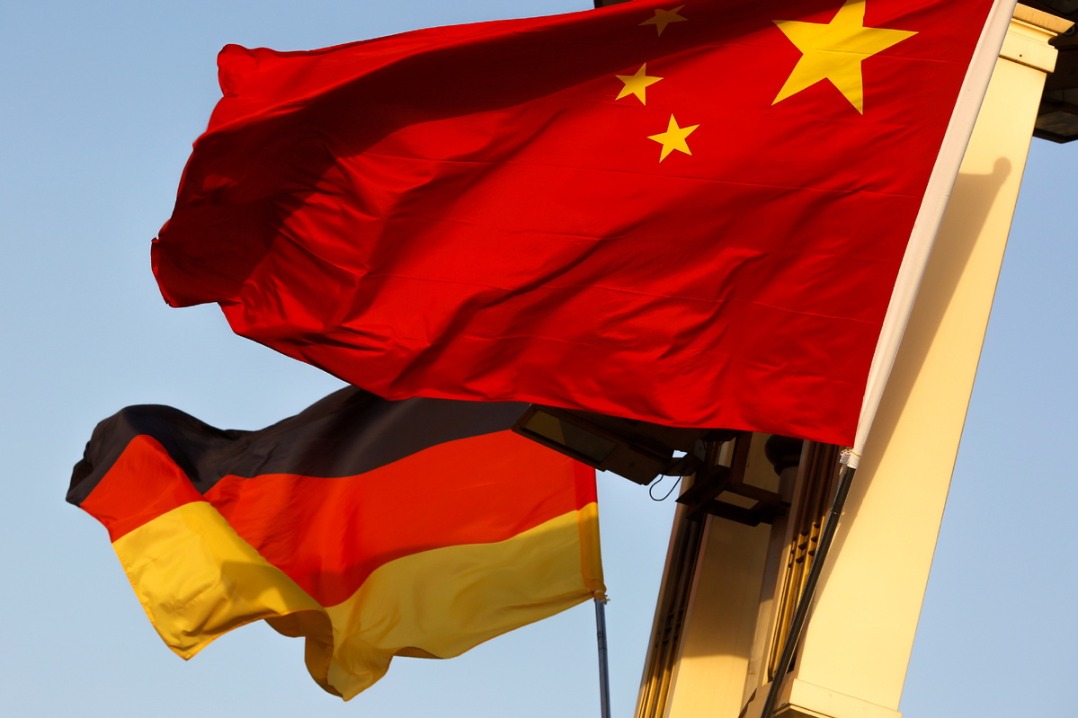Financial decoupling farfetched
China needs to keep increasing its regulatory transparency and predictability in order to remain a top spot for cross-border capital inflows


Despite the popular narrative, the evidence so far does not suggest that the world's two largest economies are headed for a real decoupling. At least that is not reflected in cross-border capital flows. If anything, China's integration into the global financial markets has only accelerated in recent years.
China continues to attract record amounts of foreign direct investment, despite the deep recession in direct investment in the rest of the world. In 2020, inbound direct investment in China expanded by more than 10 percent year-on-year while global FDI slumped 35 percent, resulting in China's share in global FDI reaching an all-time high of more than one-fourth. Through the third quarter of 2021, FDI inflows almost doubled compared with the same period last year, paving the way for a new high for total FDI inflows into China this year.
In financial services where the long-standing restrictions on foreign ownership have been gradually eased, for example, many foreign financial institutions, including Wall Street giants such as Goldman Sachs and JPMorgan Chase, have either converted their local joint ventures to majority owned or are on their way to take full ownership of their joint ventures in China. A recent survey by the American Chamber of Commerce in Shanghai shows that the nearly 60 percent of multinationals from the United States in China had increased investment, and more than 70 percent of US manufacturers in China had no plans to shift operations out of China in the next three years.
Meanwhile, foreign portfolio investment into China continues to expand. By the end of August 2021, foreign holdings of Chinese onshore equities and bonds (especially Chinese government bonds) had reached a record amount of roughly $1.15 trillion, a nearly 10-fold increase over December 2013. This rapid increase is driven by multiple factors, such as China's strong economic rebound after largely controlling the COVID-19 pandemic, the appreciation of the renminbi, the inclusion of Chinese securities in global securities indices and a US-China interest rate differential that favors China. That said, foreign holdings as a share of total bond outstanding and total market cap of domestic equity market in China, compared with other developed markets that are more open to foreign portfolio investment, are still relatively low, suggesting there is room for further liberalization to broaden existing channels for foreign portfolio investment to flow into China.
Despite the US threat to delist Chinese companies from its stock exchanges and Beijing's regulatory move on US listings of Chinese companies, US investors are holding a large and increasing amount of Chinese equities and bonds. Estimates suggest that the current US position in Chinese equities and debt securities, including those issued onshore in the Chinese mainland as well as by Chinese entities in offshore markets (sometimes involving a variable-interest entity structure), exceeds $1 trillion, and is most likely still growing.
While both Beijing and Washington now seem reluctant to let certain Chinese companies retain their US listings, that will not deny Chinese companies access to US and global capital. US-listed Chinese companies have the option of either converting themselves into private ownership via channels such as private equity buyouts, or shifting their listings to Hong Kong where US investors can continue to invest. In fact, since last year Hong Kong is already seeing an influx of secondary listing by Chinese firms that are already traded in the US, something the stock exchange in Hong Kong has dubbed "homecoming".
While China's integration into the global financial markets has accelerated in recent years, there is no denying that this integration is highly asymmetric. The past several years have seen little Chinese FDI in the US, largely because of the technology transfer restrictions the US has imposed on China as well as China's tightened controls over certain kinds of outbound investments. Moreover, although the Chinese foreign exchange regulator recently expanded outbound portfolio investment quotas for qualified domestic institutional investors, China's outflows of portfolio capital are still under relatively tight control.
Past performance is no guide to the future. It is still hard to say to what extent the global capital will continue to be attracted to China. As the world gradually recovers from the pandemic shock, global investment flows have begun to rebound and international investors are inclined to worry about regulatory uncertainty and related risks. If China is to remain a top spot for cross-border capital inflows, it needs to continuously increase its regulatory transparency and predictability in order to improve its investment environment.
The author is a research fellow at the Peterson Institute for International Economics. The author contributed this article to China Watch, a think tank powered by China Daily.
The views do not necessarily reflect those of China Daily. Contact the editor at editor@chinawatch.cn









































